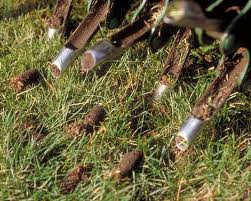
Should I Pick Up the Cores After Core Aeration?
Core aeration is one of the most beneficial lawn care treatments you can give your property. It helps relieve soil compaction, improve water and nutrient absorption, and promote healthy grass growth. However, after core aeration is completed, many homeowners wonder whether they should pick up the cores (the small plugs of soil that are removed during the process). The answer may surprise you.
In this blog post, we’ll break down whether or not you should pick up the cores and explain why leaving them on your lawn might actually be the best choice for its health.
What Happens During Core Aeration?
Core aeration is a process where small plugs of soil are removed from the lawn to create space for air, water, and nutrients to reach the roots more effectively. These plugs—known as cores—are typically about 2-4 inches long and are left on the surface of the lawn after the aeration process.
Should You Pick Up the Cores?
In short: No, you don’t need to pick up the cores. Here’s why:
- Cores Break Down Naturally: The small plugs of soil left behind from core aeration are actually beneficial for your lawn. As they break down, they help to naturally fertilize the lawn. The organic matter in the soil cores decomposes and enriches the soil with vital nutrients, which supports the health of your grass.
- Improves Soil Structure: Over time, the decomposing cores return valuable organic material to the soil. This helps to improve soil structure by increasing its ability to retain moisture and nutrients. The process also promotes beneficial microbial activity, which is essential for a healthy lawn ecosystem.
- No Need for Extra Work: Picking up the cores can be a time-consuming task. Since the plugs naturally break down and contribute to the lawn’s overall health, there’s no need to spend the extra effort cleaning them up. Simply let them sit and do their job!
- Prevents Compaction: One of the key reasons for aeration is to relieve compaction. If you pick up the cores, you may unintentionally disturb the soil and negate some of the benefits. Letting them stay where they are helps the soil return to its naturally loosened state.
- Cores Can Serve as a Topdressing: The cores, once they decompose, can also act as a natural topdressing for the lawn. They help level out any small holes created during the aeration process and provide an additional layer of rich, organic material that will encourage new grass growth.
What Should You Do After Aeration?
While picking up the cores isn’t necessary, there are a few steps you can take to maximize the benefits of core aeration:
- Water the Lawn: After aeration, water your lawn thoroughly. This helps to settle the soil and assists the grass roots in contacting the loosened soil.
- Fertilize: Core aeration is a great time to fertilize your lawn. The holes created during the process allow fertilizers to reach deeper into the soil, where they’re most needed. A slow-release fertilizer is ideal at this time.
- Overseed: If your lawn has bare spots, core aeration is an excellent opportunity to overseed. The loosened soil provides a great environment for new grass seeds to germinate and grow.
- Let the Lawn Rest: After core aeration, avoid heavy foot traffic and mowing for a few days to allow the lawn to recover.
Conclusion
To sum it up, there’s no need to pick up the cores after core aeration. Leaving them on the lawn is not only easier, but it also provides additional benefits like improved soil health and natural fertilization. However, if you prefer a cleaner look or have specific lawn care issues, removing the cores is an option. Regardless, core aeration is a great step toward ensuring your lawn is healthy, vibrant, and ready for the growing season.
At Rich Green Lawns, we’re experts in all things’ lawn care, including core aeration. If you have questions about the process or need professional assistance to improve your lawn’s health, don’t hesitate to reach out to our team. We’re here to help your lawn thrive!
